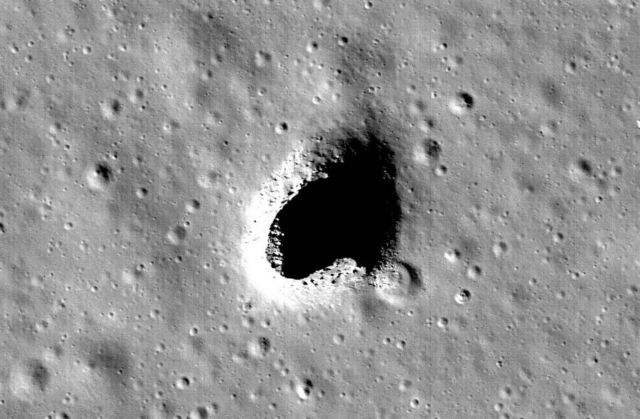The existence of a huge open lava tube in the Marius Hills region, could be used as an underground colony on the Moon.
The study published in Geophysical Research Letters, confirms that the giant lava tube could be used to protect astronauts from hazardous conditions on the lunar surface.
Unlike Earth, the moon has no atmosphere or magnetic field to protects its inhabitants.
Above, the Marius Hills Skylight, as observed by the Japanese SELENE/Kaguya research team. Credit NASA/Goddard/Arizona State University
No one has ever been on the moon longer than three days, largely because space suits alone can’t shield astronauts from its elements: extreme temperature variation, radiation, and meteorite impacts.
The safest place to seek shelter is the inside of an intact lava tube, according to the study.
Lava tubes are naturally occurring channels formed when a lava flow develops a hard crust, which thickens and forms a roof above the still-flowing lava stream. Once the lava stops flowing, the tunnel sometimes drains, forming a hollow void.
Junichi Haruyama, a senior researcher at JAXA, Japan’s space agency, said:
“It’s important to know where and how big lunar lava tubes are if we’re ever going to construct a lunar base. But knowing these things is also important for basic science. We might get new types of rock samples, heat flow data and lunar quake observation data.”

The city of Philadelphia is shown inside a theoretical lunar lava tube. Credit Purdue University/David Blair
source Purdue University






Leave A Comment